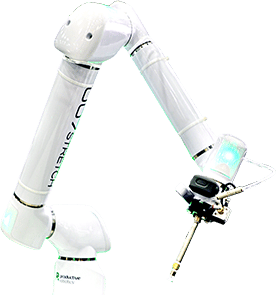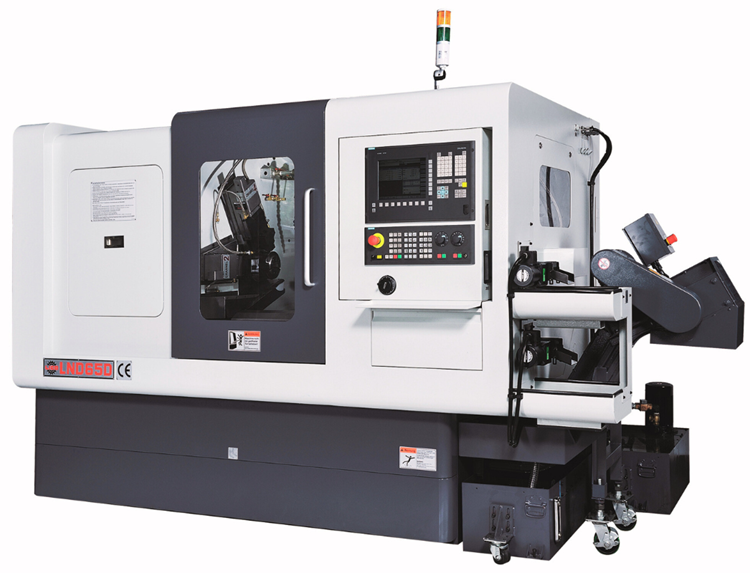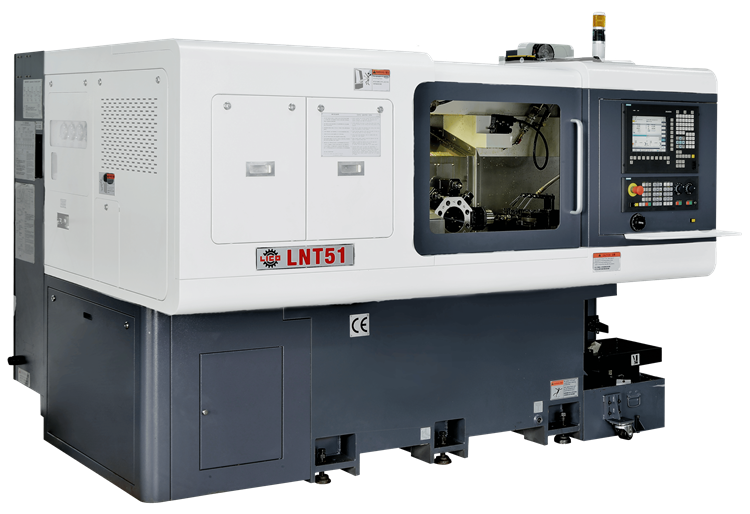LICO
LICO Machinery – Multi-Slide CNC Screw Machines for High-Volume Production
Established in 1978, LICO Machinery is a Taiwan-based manufacturer of high-production CNC turning solutions. Originally producing cam-operated multi-spindle automatics, LICO transitioned to CNC technology in the late 1980s and brought its advanced multi-slide CNC screw machines to the U.S. market in 1990. Today, LICO is recognized worldwide for its high-speed, high-precision multi-slide lathes engineered for automotive, aerospace, medical and general precision component manufacturing.
The LNTS Series is LICO’s most popular multi-slide CNC platform, designed for small to medium-sized parts that demand speed, rigidity, and repeatability. Each machine combines up to four independently driven cross-slides with a live-tool turret and sub-spindle to perform simultaneous cutting with up to five tools. Ideal for parts under seven inches long and up to two and a half inches in diameter, the LNTS excels in producing precision hardware, fittings, and hydraulic components with unmatched efficiency.
The LNDD Series expands flexibility with full Y-axis control and an independent counter-spindle for simultaneous front and back machining. Two two-axis cross-slides work in coordination with an eight-position live-tool turret to deliver maximum productivity on complex, longer parts. Capable of handling parts up to seventeen inches long and up to four inches in diameter, the LNDD is engineered for intricate geometries and tight-tolerance, high-volume work.
As LICO’s exclusive North American distributor, Absolute Machine Tools delivers complete turnkey multi-slide CNC solutions backed by engineering, automation, applications, and service support. From installation and process optimization to time studies and training, Absolute helps manufacturers maximize efficiency, output, and profitability with every machine.
LICO multi-slide CNC screw machines — built for speed, backed by precision.
Machines
Proud Member of the
Precision Machine Products Association

Embracing Automation
Our A+ Automation team offers simple and affordable solutions for CNC machine automation

Frequently Asked Questions About LICO Machinery
What kind of tolerance can LICO machines hold?
This is a very difficult question to answer, because the answer is always part dependent. That takes into consideration material, part length to diameter ratio, tooling, etc. Most of our customers don’t have any issue holding +/- .001” almost anywhere on the part. This kind of tolerance should be under control using accepted tooling practices.
Many of our customers are holding +/- .0005”, however they may be attending to the machine, changing offsets, etc. more often. The real issue here is usually tool wear. Also it depends on where the tight tolerance is located on the part.
Closer than +/- .0005” will require close monitoring and 100% inspection, unless processes are established where the tooling performs under control.
The LICO machines are built with the same parameters as most CNC lathes. The resolution is .0001” The cross slides use dovetail & gib designed slides, which give them rigidity and repeatability. The turret uses linear roller bearings and rails that are set extra wide. This provides a very stable Z-axis motion.
Those are just some facts that you may want to use. Anything that you are not comfortable answering, refer to Phill, Frank, or Greg. Because the answer is often part dependent, getting a copy of a print is always advisable.
How long does it take to set up a LICO machine?
The answer depends on how many tools you are changing. Standardizing tool positions can save a lot of change over time. Most of our experienced customers can do a major changeover (collets, bar feed, several tools) in under 2 hours. Some customers are handling most of the changes in under 1 hour, when they standardize tools. We have customers using quick change collets and standardized tooling who have achieved average setup times between 20 and 40 minutes.
What kind of work is best for the LICO?
Again, the answer is all part-dependent. To be clear; lot size, tolerances, finishes, material, part configuration all factor into the answer.
The LICO machines are especially effective when you can eliminate a second operation, overlap operations from single turret machines, eliminate outside processes (polishing, grinding, etc.), Think CNC capabilities with screw machine speed.
Both the LNTS and LNDD series are equipped to run a wide variety of parts from all kinds of material. They each have the capability to drop parts complete. The machines are best suited for parts between .500” and 3.0” diameter. They are capable of sizes larger and smaller, but jobs larger than 3” need to be evaluated.
The LNTS is best suited for production parts under 7.0” in length. The Pick Off Device cannot handle parts longer than 7.0”. Bar diameters up to 2.625” can be handled on the LNTS series machines, however the sweet spot is between .500” and 2.375”.
The LNDD series will handle part lengths up to 17”, because it uses an independent sub spindle, where the POD on the LNTS is turret mounted. The diameter sweet spot for the LNDD machines is .750” to 2.750” Larger diameter material can be run, but it is part dependent. The LNDD also offers a Y axis for more complex milled shapes than the LNTS.
Both the LNTS and LNDD are robust machines. We have customers machining Brass and Aluminum to Inconel and Hastelloy…and everything in between.
Why are the LICO cycle times consistently faster than Twin Spindle, Twin Turret CNC lathes and even single spindle screw machines?
There is nothing magic about the LICO machines. It’s a simple matter of putting multiple tools in the cut. They don’t cut any faster, tool for tool, than any other CNC lathe. But the LICO machines can get 3, 4, even 5 tools in the cut at one time. Now getting 5 in the cut is rare, but 4 is common, and almost every program utilizes at least three tools in the cut simultaneously.
It is getting multiple tools in the cut, often multiple times during the cycle that makes the LICO cycle times so fast. Twin turret lathes can get two tools in the cut some of the time. Same with
The LICO machines frequently outrun single turret machines by 2 to 3 times. And if it’s a single turret, single spindle, we will likely eliminate secondary operations. These machines can only have one tool in the cut at one time.
LICO machines can outrun Twin Spindle, Twin Turret machines in most cases. If the part is perfectly balanced, the twin/twins can be faster, but most of the time there is one end that has more work performed than the other. The LICO machines can often put 3 to 4 tools to work at once, thus be faster than the Twin/Twin design.
We can often eliminate the need for high-speed form tools on screw machines, therefore eliminating tooling costs and allowing the all carbide tooling in the cut. This greatly reduces cycle time, and allows for a better machine efficiency, due to a lack of tool grinding and bar loading.
With all those tools, aren’t LICO CNC Screw Machines complex to program?
The LICO machines operate with 4 or 5 channels. Each channel has its own program. Therefore, each slide has a unique program, either 2 or 3 axis. So, one cross slide may only do OD turning or threading, or drilling/boring. All slides may overlap, depending on proximity to each other. So, you simply program each slide independently, then use Start/Wait codes to relate them to each other.
The most complex program will be the turret, because is has many more tools, and can work on both the main and sub sides. But even the turret slide programming is no more complex than a single turret, twin spindle machine.
Thus, you can program each slide, put them in a spreadsheet where you can see the gaps/overlaps, and then insert the correct start/wait codes. Leave blank spaces when the slide is not operating, and you have a simple visual representation of the cycle.
Also, Esprit has Cam software and posts for the LICO machines. However, any Cad/Cam software can write the individual programs for each slide.
How can I justify the expense for a LICO screw machine to run Brownie parts?
The answer to this will depend upon what kind of Brown & Sharpe work they are looking to move to LICO Machinery. We have customers who have consistently run parts either faster, or at no cycle time loss, but who have experienced a much higher machine utilization rate on the LICO machines. We even have some customers who run their parts slightly slower but have eliminated any post-machining handling (deburring) and the result is more good parts (due to utilization) at the end of the day.
With the use of magazine bar feeds, customers may be able to run many parts untended to lightly tended. So, one person can manage more machines than with Brownies.
Now, the difficulty comes with parts that are running under 15 seconds and have no secondary operations. Single spindle CNC machines will never run very low cycle time parts as fast as cam-operated screw machines. The reason is simple physics. Cams operate on a ‘predictive’ nature. They expect the last operation is finished/cleared before the next one starts. And if the previous tool has not cleared, you have a wreck.
CNC machines, on the other hand, pause, make electronic checks to make sure the previous tool is clear and avoid wrecks. However, all this checking to confirm an operation is done before the next one starts can be time consuming. Correct use of Start/Wait codes can reduce some of this time, but for very fast parts CNC lathes will always be slower than cam-operated machines.
Most Brownie jobs running in 30 seconds or more, can be reduced on a LICO machine. Jobs utilizing high speed form tools on Brownies can be run significantly faster on LICO machines using standard carbide insert tools. Less expensive than custom form tools and higher surface feet result in a reduced cycle time. Also, many times complex jobs require a second chucking, and those parts can usually be dropped complete on the LICO machines.
So what do I do with my #00 parts on a LICO machine?
Good question, and the answer varies. If you are dropping them complete, then you may need to either figure out how to keep running the cam machines or go to the customer and see whether you can get more money for the part. An alternative is running these parts lights out on the LICO, but that only applies when the lot sizes are long enough to make a difference.
How do LICO machines handle multi-spindle parts?
To be clear, in a pure cycle time comparison, no single spindle machine (cam or CNC) is going to run parts faster than a multi-spindle machine. However, there are several different scenarios where we have replaced multi-spindle machines and it has made economic sense.
The first (and most common cause) is shrinking lot sizes. Once multi-spindle machines made 15k, 25k, 50k or more pieces per setup. Now, it is likely for some customers to see requests for 1,500 pieces … or less. The setup time can be 8 to 12 hours for some multi-spindle houses. So even if the cycle time is much faster on a multi-spindle, a customer with a LICO can have the job setup and run off before they get the first good piece off their multi-spindle.
Do the LICO machines have live tooling?
Both models of LICO have live tooling for machining in either axial or radial directions. Special, adjustable angle live tools are available, but they are time consuming to set, so a good choice for long running work, but not for angled holes that might take a lot of changing. The LNDD model has Y-axis milling. The LNTS uses polar milling or polygon turning to generate hexes or other shapes.
Live tool drives are available in any position. The live tools are driven by a 5-horsepower servomotor. The top rpm is 3,000, but that can be doubled with the use of specially-geared tools to 6,000 rpm. All live tools are driven by a helical bevel gear ring in the turret. Each live tool has a helical bevel gear on the end of the tool, which mates with the ring gear for providing power. When one tool is activated, they are all activated.
Why are the LICO machines expensive?
There are several reasons for the cost of the LICO Machinery equipment. First, the LICO machines have 4 or 5 channels of 2 to 3 axes each channel. Each axis requires its own set of ball screws and drives; therefore, the machine has many more sets of ways, slides, ball screws, motors, and drives than a 2-axis lathe, or even a twin spindle/twin turret machine. This is what enable you to get multiple tools in the cut.
The comparable equipment out there is an ABC Index (cross slide models) or TNM Traub. Cost comparison with these machines (and the LICO is capable of more versatility) will show the LICO to be priced at one half to one third the cost of the Index or Traub.
In addition, the LICO series is priced with a lot of features for which you will pay extra with other machine builders. The LICO machines come standard with: high pressure coolant (1,000 psi), bar feed interface, tool holders for all cross slides and turret, two (each) live radial and axial tool holders, chip conveyor, parts conveyor, collet chucks. That can amount to $25k or more of options on many machines.
As a potential customer once described at IMTS, “This is the only machine that can get three or more tools in the cut in this price range at the show.” If the customer is machining production quantities from bar, the LICO machines will generally produce those parts with the best ROI in the industry.



